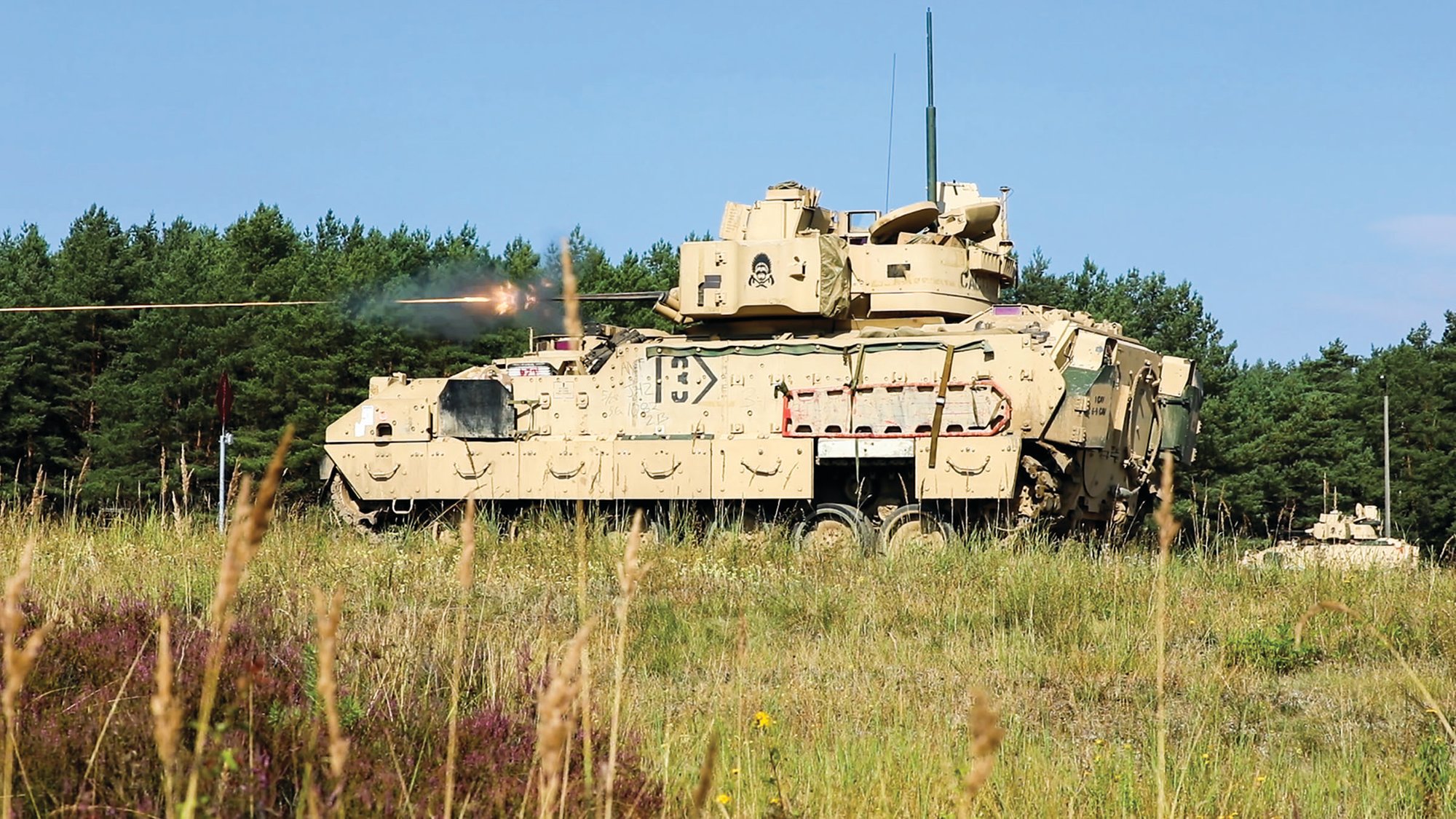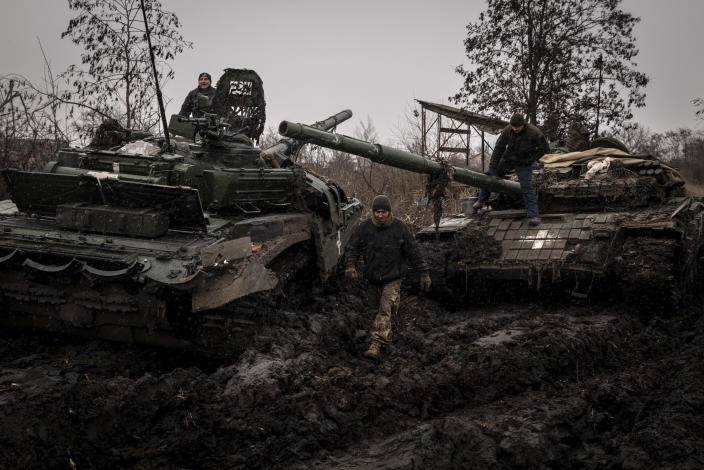Russia war: How armored vehicles aid Ukraine at critical time?

How are armoured vehicles helping Ukraine during the Russian conflict?
The M2A2 Bradley is also a medium-armoured combat vehicle with tracks rather than wheels. It has a three-person crew as well as five or six additional soldiers and is regarded as an important tool for safely transporting infantry squads into battle.
As the war approaches its main one-year anniversary, the United States and Germany are supplying Ukraine with armoured vehicles, including 50 tank-killing Bradleys, in order to strengthen its forces against Russia and prepare for a possible spring offensive.
The automobiles are insufficient to meet the demand for battle tanks in Ukraine. They do, however, provide a strategic capability for fighting a war as the seasons change and Ukraine launches an aggressive campaign to retake territory from Russia, particularly in the east.
The Bradley and other armoured carriers are investigated, as well as the benefits they bring to the battlefield:
RUSSIA WAR: WHAT ARE THEY, AND ALSO HOW CAN THEY HELP YOU?
They are not, however, tanks. Western countries employ a variety of armoured personnel carriers, such as the Bradley and the 40 German Marders. A combined arms manoeuvre fight is the ability to win a battle by coordinating the use of various ground, air, and other weapons and fighting units.
The M2A2 Bradley is also a medium-armored combat vehicle with tracks rather than wheels. It has a three-person crew as well as five or six additional soldiers and is regarded as an important tool for safely transporting infantry squads into battle.
It is typically armed with a machine gun, an anti-tank TOW missile launcher, and a 25 mm gun mounted on top for use if the Bradley is rendered inoperable. TOW stands for “tube-launched, and optically tracked, wire-guided,” which means the missile can only be fired at targets visible to attacking troops on the battlefield. As a result, it works particularly well in open spaces such as wide-open fields and deserts.
The Marder is comparable and can carry weapons that are essentially identical. In a multi-army battle, for example, Ukrainian forces could launch artillery and airstrikes on a Russian stronghold before deploying infantry troops in armoured vehicles to the front lines to launch a ground assault and exploit Russia’s vulnerability.
According to Bradley Bowman, senior director of the Foundation for Defense of Democracies’ Center on Military and Political Power, the use of Bradleys will allow Ukrainian forces to exploit weak spots caused by artillery barrages. It’s a potent combination.
The Bradleys and Marders will help to compensate for Russia’s and Ukraine’s significant tank and armoured vehicle losses over the last ten months.

WHY AT THIS MOMENT?
The decision to send the Bradleys emphasises the increasing complexity and lethality of the weaponry provided by the US and its allies throughout the conflict.
Many criticise the slow pace, claiming that Ukraine needs all the help it can get to fight Russia and that some territory losses could have been avoided if the US and its allies had moved more quickly.
Others argue that the types of weapons provided have changed as the nature of the war has evolved since it began in February of last year, as has Ukrainian troops’ increasing ability to travel outside of their home country to receive the training needed to operate and maintain the more advanced and complex systems.
The Bradley will be useful as the fighting in the eastern Donbas region intensifies, where there is “a lot of farmland, and a lot of open ground,” according to White House National Security Council spokesman John Kirby. While the decision is being made with the current military needs of Ukraine in mind, he claims that it is also “looking at what the fight is likely to be in the future.”
The Pentagon’s deputy assistant secretary of defence for Russia and Ukraine, Laura Cooper, believes that now is the best time to offer Bradleys. “The Ukrainians have shown a growing proficiency in maintenance and sustainability,” she said. She went on to say that, as a result of US-led training, troops will be able to operate, maintain, and repair the weapons by the end of the month.
During the winter, the United States and other allies send significant amounts of weapons and equipment to Ukraine in preparation for the spring fighting.
BUT, PLEASE, NO TANKS
Despite Ukraine’s repeated requests, the US and its allies have refused to send heavier, more powerful, and complex armoured vehicles.
The American M1 Abrams tank, for example, has a much stronger gun and is better armoured, but it also weighs significantly more and runs on jet fuel rather than diesel. All of this makes sustainment and maintenance more difficult while troops are on the move.
Cooper made the following statement: “We are all in agreement that Ukraine needs tanks. However, when it comes to tanks, we must consider maintenance and sustainability. We’re also aware of how difficult it is to maintain the Abrams tank, which is also a gas guzzler.
She explained why the US and the Netherlands worked together to refurbish T-72 Soviet-era tanks familiar to Ukrainian troops.
For decades, the United States and other Western countries have trained and practised moving troops in battle so that vital supplies of food, fuel, and ammunition can keep up. A long troop convoy Russia was sending toward Kyiv was halted early in the conflict because troops lacked food and fuel due to a complete logistical breakdown.
WHEN ARE THE VEHICLES GOING TO BE AVAILABLE?
Officials from the United States and Germany refused to say when the training would be completed or when the armoured vehicles would arrive in Ukraine.
Ukrainian forces will begin receiving more extensive combat training this month, according to the Pentagon. Bradley training, according to Cooper, will be included in that training. She estimated that it would take a few months to field this capability and train the Ukrainians.
Olaf Scholz, Germany’s chancellor, has long refused to deliver the vehicles to Ukraine, claiming that Germany could not do so alone. As a result, the US commitment was announced at the same time this week.
According to Scholz’s spokesperson Steffen Hebestreit, who spoke to reporters in Berlin, German vehicles should be ready to travel to Ukraine in the first quarter of this year. According to Hebestreit, experts estimate that the German plan to train Ukrainian forces to operate the vehicles will take about eight weeks.
On Saturday, as both sides observed Orthodox Christmas, Ukraine’s president praised the US for including tank-killing armoured vehicles in its latest multibillion-dollar military aid package, saying they are “exactly what is needed” for Ukrainian troops fighting Russian forces.
The White House announced USD 3.75 billion in weapons and also other aid for Ukraine and its European backers on Friday, while Moscow declared a brief Orthodox Christmas truce.
The unilateral 36-hour pause, according to Ukrainian officials, was a ruse that went unnoticed by some of Moscow’s forces, who were pushing ahead with the nearly 11-month invasion.

The Russian Defense Ministry insisted Saturday that its main forces along the 1,100-kilometer (684-mile) front line were adhering to the Kremlin-ordered cease-fire, but that they would retaliate if attacked.
The most recent US military aid package to Ukraine was the largest to date. For the first time, it also included 50 Bradley armoured vehicles and 500 anti-tank missiles. Germany has also said it will supply approximately 40 Marder armoured personnel carriers, while France has said it will supply wheeled AMX-10 RC tank destroyers.
The pledges made this week sent a strong message to Ukraine that it can rely on long-term Western support in the face of Russian President Vladimir Putin’s efforts to divide the country.
On Friday, Ukrainian President Volodymyr Zelenskyy praised the US aid package as “very powerful” in his nightly televised address.
“For the first time, we will also receive Bradley armoured vehicles, which are exactly what we require. New weapons and ammunition are being developed, such as high-precision rounds, rockets, and drones.” It’s both timely and effective “he claims.
He thanked US President Joe Biden, US lawmakers, and “all Americans who value freedom and recognise that it is worth defending.”
The Orthodox Christmas holiday, which is celebrated by both Ukrainians and Russians, emphasised the animosity caused by Russia’s invasion.
The Christmas service was held at a revered 1,000-year-old cathedral complex in Kyiv, Ukraine’s capital. Saturday’s sermon was delivered in Ukrainian rather than Russian for the first time in decades, highlighting Ukraine’s efforts to dismantle Moscow’s remaining influence over religious, cultural, and economic life in the country.
The Ukrainian government took over administration of the UNESCO World Heritage Site Kyiv-Pechersk Lavra complex from the Russian Orthodox Church on Thursday, allowing the Ukrainian church to use it for Christmas services.
“It’s a fantastic moment,” he says.
Among the hundreds of worshippers present was Alex Fesiak. “Previously, this location — on Ukrainian territory, within Kyiv — was associated with Moscow. We now have the distinct impression that this is ours, that it is Ukrainian. This is part of the Ukrainian national identity.”
Kirill, the Kremlin-aligned head of the Russian Orthodox Church, proposed the Putin-ordered Christmas cease-fire, which began on Friday. The Julian calendar is used by the Orthodox Church, and Christmas is celebrated on January 7. According to Putin’s order, a cease-fire would allow people in combat zones to attend Christmas services.
Ukrainian officials, on the other hand, refused to comply, dismissing the move as a Russian ploy to buy time for its beleaguered invasion forces to regroup.
Ukrainian and Western officials interpreted the announcement as a Russian attempt to seize the moral high ground and possibly steal battlefield initiative and momentum from Ukrainian forces during their recent counteroffensive.
The standoff was supposed to end Saturday night at midnight Moscow time, which is 11 p.m. in Kyiv.
In its daily report on the invasion, Britain’s Ministry of Defense, a major supplier of military aid to Ukraine, said Saturday that “fighting has continued at a routine level into the Orthodox Christmas period.”

Serhiy Haidai, regional governor of the hotly contested Luhansk region in eastern Ukraine, reported that Russian shelling and assaults had continued. According to Haidai, Russian forces shelled Ukrainian positions 14 times and stormed one settlement three times during the first three hours of the cease-fire. The assertion could not be verified independently.
Attacks were also reported in other parts of Ukraine in the previous 24 hours on Saturday, though it was unclear whether the fighting took place before or after the cease-fire went into effect. fire’s
According to the General Staff of Ukraine’s Armed Forces, Russian forces launched a missile strike and 20 rocket salvos against settlements in the east, northeast, and south.
On Saturday, the head of Ukraine’s eastern Donetsk region reported two civilian deaths in Bakhmut and Krasna Hora, both hotly contested cities, as a result of Russian airstrikes the day before.
Yaroslav Yanushevych, governor of the southern Kherson region, said Saturday that Russian forces shelled the region 39 times on Friday, hitting houses, apartment buildings, and a fire station. One person was killed, and seven others were hurt. s NSA (Associated Press) (Associated Press)
edited and proofread by nikita sharma




